You’ve built a brand to be proud of, top-performing products, a seamless tech stack, and marketing that drives eager customers to “buy now.” But behind the scenes, your fulfillment processes might still be holding you back, manual, outdated, and far from the streamlined system you need to scale.
If this sounds familiar, you’re not alone. A report by ShipBob reveals that 40% of e-commerce brands struggle with supply chain inefficiencies, while McKinsey reports that businesses adopting modern, data-driven logistics see up to 15% faster growth compared to those relying on outdated systems. It’s clear: manual fulfillment doesn’t just slow operations, it’s a major obstacle to growth.
At M&M Quality Solutions, we understand how critical logistics are to your business’s success. That’s why we created Adaptive Growth Logistics (AGL), a cutting-edge fulfillment service designed to eliminate manual inefficiencies and transform your operations into a true growth engine.
The Hidden Costs of Manual Fulfillment
Fulfillment isn’t just a back-office task; it’s the backbone of your business. Yet, many brands treat it as an afterthought, relying on legacy systems or inefficient third-party logistics (3PLs). Research shows that 56% of brands say logistics inefficiencies impact profitability, but the true costs often don’t become obvious until they start affecting revenue, customer satisfaction, or both.
Here are three ways manual fulfillment can hold your business back:
1. Data Delays Create Operational Blind Spots
Manual reporting is one of the biggest culprits. Imagine preparing for a big sale or holiday season but waiting days for your 3PL to send inventory levels or shipment data in a static spreadsheet. Without real-time insights, you’re forced into reactive decisions, like over-ordering, under-stocking, or missing opportunities to optimize.
The Impact: Companies with advanced supply chain analytics reduce inventory costs by 20-50%, according to Deloitte. But manual systems make it nearly impossible to achieve these savings or stay ahead of demand.
2. Poor Tracking Leads to Frustrated Customers
Today’s consumers expect fast, reliable updates on their orders. Yet, many outdated logistics systems can’t deliver the real-time tracking that customers now consider standard. Studies show that 93% of customers want regular updates on their purchases, but legacy 3PLs often fall short.
The Result: Late or incorrect tracking damages customer trust, not just in your logistics provider but in your brand. Bain & Company found that a 5% increase in customer retention can boost profits by up to 95%, underscoring the direct connection between customer experience and long-term growth.
3. Static Workflows Can’t Keep Up with Growth
Scaling brands need flexible logistics systems. Whether expanding into new markets, launching innovative product bundles, or managing seasonal demand, your fulfillment operations must adapt quickly. Unfortunately, manual workflows are rigid and can’t handle the dynamic needs of a growing business.
The Risk: When demand spikes, manual systems crack under pressure, leading to slower deliveries, missed opportunities, and an overburdened team. Gartner reports that businesses with flexible supply chains are 2.5x more likely to outperform competitors on efficiency and customer satisfaction.
Why Many Brands Stick with Manual Systems, and Why They Shouldn’t
Why do so many brands continue using outdated systems? Often, it’s inertia. Logistics gets labeled as “back office,” making it easy to ignore until something breaks. Plus, switching providers can feel overwhelming, so businesses defer the decision.
But here’s the reality: What seems like a minor inefficiency today can quickly escalate into a major liability as you scale. According to a Shopify survey, 43% of brands cite fulfillment challenges as a barrier to growth. Delaying the switch to modern logistics only increases risks to your revenue and customer experience.
The Solution: Adaptive Growth Logistics by M&M Quality Solutions
At M&M Quality Solutions, we believe fulfillment should drive your growth, not hold it back. That’s why we developed Adaptive Growth Logistics (AGL), a revolutionary service designed to replace outdated, manual processes with modern, scalable solutions tailored to fast-growing brands.
Here’s what makes AGL stand out:
1. Real-Time Data and Visibility
AGL gives you full transparency into your operations, from inventory levels to shipping speeds, so your team can make proactive decisions. No more waiting for outdated spreadsheets, just actionable insights when you need them.
2. Automation That Saves Time
Our system automates repetitive tasks like order routing and inventory updates, freeing your team from manual interventions and allowing them to focus on strategic growth.
3. Flexibility at Scale
AGL’s adaptable workflows grow with you. Whether you’re launching new SKUs, expanding internationally, or navigating seasonal spikes, we ensure your logistics keep pace with your business.
Why Now Is the Time to Upgrade Your Logistics
Switching from manual fulfillment may feel daunting, but the cost of staying stuck is far greater. Every day spent on outdated systems drains revenue, erodes customer trust, and limits your ability to scale.
Modern logistics isn’t just about staying competitive; it’s about getting ahead. With AGL by M&M Quality Solutions, your fulfillment becomes a growth driver, helping you delight customers, scale efficiently, and focus on what matters most.
Ready to Transform Your Fulfillment?
If your logistics are holding you back, it’s time to make a change. At M&M Quality Solutions, we specialize in turning fulfillment into a competitive advantage for ambitious brands. Let’s talk about how Adaptive Growth Logistics (AGL) can help you unlock your next chapter.


